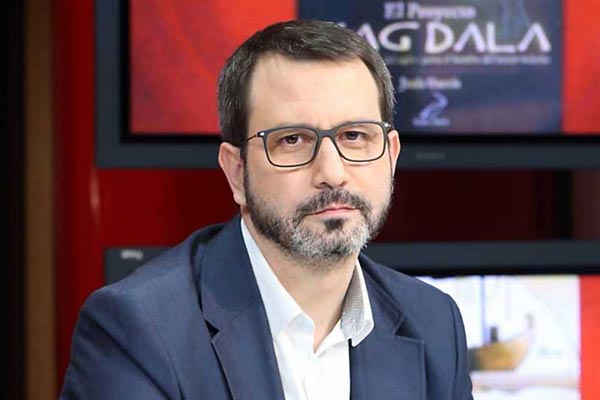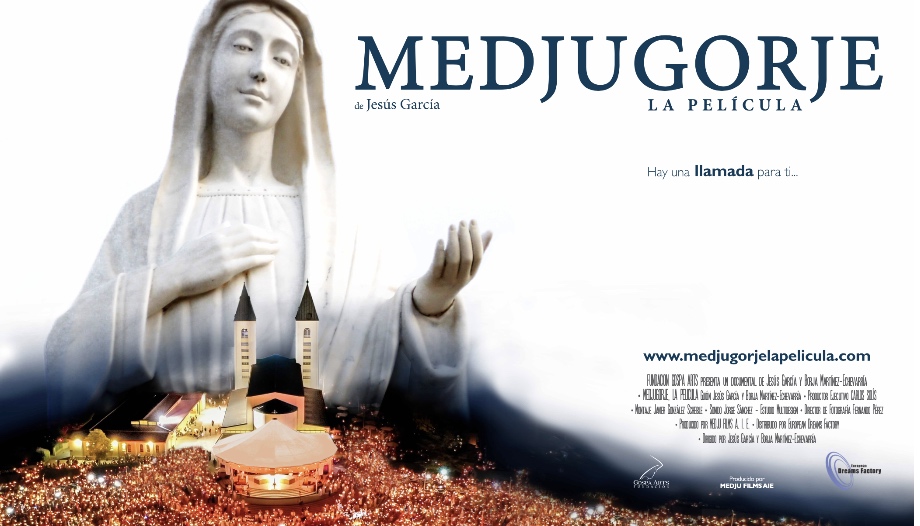The attraction that Medjugorje exerts on millions of people is unquestionable. The apparitions of the Virgin Mary that have taken place in this small place in Bosnia Herzegovina are thousands, "because since June 24, 1981, when they began, until today, they have not ceased, according to the testimony of the visionaries. There are three of them [the visionaries are six], who claim to have apparitions every day," says the director of the documentary, Jesús García Colomer.
It is said that St. John Paul II said privately that he did not go to Medjugorje because he was the Pope and could not, but that if he were not the Pope he would go there to hear confessions. Benedict XVI set up a commission of inquiry, and "the most important gesture was made by Pope Francis when he removed the power from the bishop of the place, and it fell on a direct envoy of his. And then there is the authorization of the pilgrimages", synthesizes this writer, scriptwriter and audiovisual producer, to whom Medjugorje changed his life.

Jesús García, husband and father of a family, got to know Medjugorje in 2006, when he was sent to make a report. He knew then "the greatest story that could be told today". His story cannot be understood without Medjugorje, and for years, together with another communication professional, Borja Martínez-Echevarría, he wanted to make this report. documentarywhich today is a reality. The film features characters such as Nando Parrado, Tamara Falcó, María Vallejo-Nágera, and many others. "The main message of Medjugorje is conversion," he says. With Jesús García, 'Suso for friends, we chat.
̶ On October 1, 2010, the first Medjugorje, the filmWhat will viewers see in the film?
It is an informative tool, a documentary, about a historical event, and at the same time contemporary, because it started 40 years ago, but the phenomena of Medjugorje continue. The film contains interviews with the protagonists, three of the visionaries, Father Jozo, who was the parish priest of Medjugorje in 1981, and who has an impressive testimony, because as a result of all this the communists imprisoned him, he spent a year and a half in jail. He is now 80 years old and we were able to interview him. The documentary also includes testimonies of people who have gone to Medjugorje, and they tell stories that they have lived there.
̶ How did the premiere go? Can we still see the film?
The premiere has gone super well. In two and a half weeks it has made thirty thousand spectators, which is a barbarity, and it is being a box office surprise, it is becoming a phenomenon, so to speak. It can still be seen. On the website of the movie we update the cinemas throughout Spain where it is still being screened.
̶ Is it true that millions of people have already visited this site, located in Bosnia-Herzegovina?
Yes, it is true. Before the pandemic, there were an estimated one to two million pilgrims from all over the world, with 2019 figures, pre-pandemic, every year. This has been going on for 40 years, there have already been millions of people going every year, and from all over the world.
̶ What is your main message?
The main message of Medjugorje is conversion. But conversion not seen for the non-Catholic, non-Christian, the bad guy, the murderer who converts, or something like that, but a call to conversion to baptized Christians who at some point in their life have left the faith and the life of the Church.
̶ What impression did it make on you and people you know? You have even commented that Medjugorje changed your life..., and from what we have seen, that of many people.
For me it was definitive. It was a turning point. I began a new life in the Church. It is true that it was not my conversion as such, but it was the end of a two-year process of conversion. And from then on, it was definitive. And in people I know, the same thing. It was a conversion. The word conversion made sense to me. When they talk to you about conversion, you don't know what they are talking about, but when you live it, I know what they are talking about. And it changed my life.
̶ Can you tell a couple of ideas you wish to convey with the film?
To begin with, it is simply an informative interest, like any documentary. But the idea that transcends is: God exists, God is true. If this is happening, as conveyed in the documentary, the only possibility is that God is true, that God exists,
̶ Does the film add anything to what we have been able to read in your book about Medjugorje?
It includes new testimonies and updates the Church's position, which I will comment on later.
̶ The climate is one of prayer and penitence, according to the film....
There was an afternoon, walking around there, when I counted 207 priests confessing, in the street. Next to the parish, they put themselves on folding chairs, on stools, they put a little sign of the language in which they confess, I think there are priests confessing in more than thirty languages, and I counted 207. Talking to them, I thought that day there were between 8,000 and 10,000 people confessing, in a single afternoon, on a summer day.
̶ What have been the main decisions of the Holy See regarding the alleged apparitions of the Virgin Mary in these lands of the former communist Yugoslavia since 1981?
Above all, three things are noteworthy. In 2010, Benedict XVI set up a commission of inquiry for Medjugorje. That commission, presided over by Cardinal Camillo Ruini, finished its work in 2014, and issued a report, which is secret to this day. The content of this report has never been revealed. While it is true that in 2017 Rome sends an apostolic visitator who takes command of Medjugorje, taking that power away from the local bishopric, which is the bishopric of Mostar, and from the Franciscans, because it is a parish administered by Franciscans. It no longer depends neither on the Franciscans nor on the bishop, and in 2017 it begins to depend directly on Rome, through this apostolic visitator.
And in 2019, by order of this apostolic visitator, Rome authorizes official pilgrimages. This means that it allows dioceses, parishes, movements or congregations to organize their own pilgrimages.
The three gestures cannot be separated, there is an investigation, years later an apostolic visitor is sent, and two years later pilgrimages are authorized. Everything has to do with it, obviously. And it is positive.
̶How many Marian apparitions have taken place since then?
Thousands. Because since June 24, 1981, when they began, until today, they have not ceased, according to the testimony of the visionaries. There are three of them (there are six visionaries), who claim to have apparitions every day.
̶ Can you summarize the position of the last Popes before Medjugorje?
Many things are said about John Paul II. One of them is that he said privately that he did not go to Medjugorje because he was the Pope and could not, but that if he were not the Pope he would go there to confess. Pope Benedict set up this commission of inquiry, and the most important gesture was made by Pope Francis when he took the power away from the bishop of the place and gave it to a direct envoy of his. That is the most important gesture. And then the authorization of pilgrimages.








